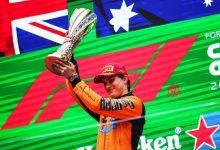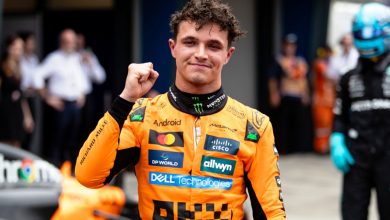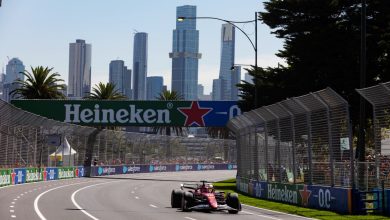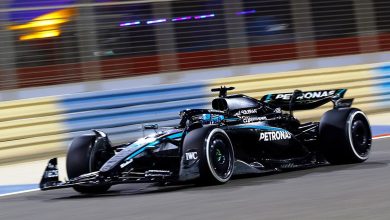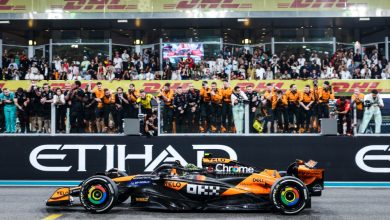F1 Sporting Director Steve Nielsen talks about how F1 is changing and the format of the sport


Montreal, 06 June 2018: After the tight and twisting streets of Monaco, F1’s first transatlantic trip of the season changes the game completely – taking us to Montréal’s high-speed, hard-braking Circuit Gilles Villeneuve.
The track on the Île de Notre Dame, where speeds top 300 km/h (186 mph) on numerous occasions, is the toughest of the season on brakes. The notorious ‘Wall of Champions’ final chicane, for example, sees drivers slowing from 320 km/h (200 mph) to 150 km/h (93 mph) in just 1.6 seconds.
It’s tough on cars and tough on drivers, failures and mistakes are common and 10 of the last 17 races in Canada have seen one or more safety car intervention. It’s set to be another classic.
Off track, F1’s progress towards a re-imagined, even more thrilling spectacle continues, and as Formula 1’s Sporting Director Steve Nielsen reveals, the most intensive fan research ever conducted in the sport is asking fundamental questions about the future shape of the sport, and leading to some fascinating potential solutions.
Formula 1’s motorsport department in working with the FIA to define the future of the sport beyond 2020, and F1 Sporting Director Steve Nielsen believes it’s time to ask some fundamental questions about the format of the sport.
Formula 1 has built up an all-new motorsport department under Ross Brawn, what’s your role in that set-up?
Steve Nielsen: My role is Sporting Director. It’s a post that didn’t exist before, but then neither did the motorsport department as whole!
I think it’s no secret that in the past Formula 1 was somewhat reactionary in terms of the future shape of the sport. There were certainly occasions when regulations were rushed through as a result of something negative happening and in some cases very little research was done in advance of sporting decisions made within Formula 1.
That has changed and the idea of F1’s motorsport department is that it’s a research facility and as part of that my job is to think about sporting regulations – to consider ways to make the sport more exciting on track, perhaps a little bit cheaper and a little bit easier to understand. That’s my primary role: forward planning and looking ahead at the structure of the 2021 regulations.
You mention that as a primary role. Is there a secondary aspect?
SN: Over the past 18 months or so Formula 1 has grown very quickly. Originally Formula 1 had about 10 or 12 people going to races but now we have about 40, with whole departments travelling to races.
In my previous life I was team manager at several F1 teams and while it’s not my primary task, in the short term, I’m also involved in getting us properly structured at the track. We now have a number of people who are not familiar with motorsport and so it’s a little bit about educating people on what is and what is not possible at tracks, with on-track activity being the priority.
Your role now in helping to shape the future of the sporting regulations is quite different to how you maybe have looked at those rules in the past as a team manager. Where once you were seeking loopholes now you’re having to think about the bigger picture.
SN: Exactly. I’m very familiar with the sporting regulations because they were my stock in trade as a team manager. You spend hours and hours gazing at them trying to find ways to benefit from the wording and trying to understand what to do in certain situations. My role now is not about finding loopholes, it’s looking at the sporting regulations and shaping them to make the sport more interesting, better for the broadcasters and better for the viewer.
How difficult is to get the teams on board with changes? Isn’t it notoriously difficult to establish consensus in Formula 1?
SN: You’re right, it is. All teams are super-competitive organisations, and having been part of that process until recently, when you work for a team you are not concerned with entertainment, you just want to win or be as competitive as you can be. That will always be, and should always be, their focus. It’s unrealistic to expect them to worry too much about the show, if in doing so it affects their own performance.
So, it falls to us in partnership with the FIA to ensure that we have a set of regulations that ensure that we have a good show and a competitive championship, and so far I think that is happening.
How is the process of defining those future regulations going?
SN: Well, one of the things we are actively engaged in is a huge amount of fan research. It isn’t completed yet, but what we want to know is what fans really want from Formula 1, from avid fans to people who don’t really engage with the sport, what they like, what they don’t like and what would make them watch more. The scale of this research has never been done in the sport before and it will have a big impact on how F1 is shaped for the future.
There are some fundamental questions being asked, of all of us, as well as fans. For example, we’re asking about what kind of weekend format we should be pursuing; how much free practice should there be; how many races should we have; should there be more than one Formula 1 race on a weekend, what should qualifying be? We have our own ideas but we want to gauge opinion, as many opinions as possible.
The things you’re talking about are key characteristics of Formula 1. Are the changes for 2021 likely to be that fundamental?
SN: I think so. Viewing figures were declining. There has been an improvement but Formula 1 needs to change to engage with a wider audience. There are many people under the age of 30 for whom Formula 1 is of little interest. We need to retain the core values of the sport, while at the same time appealing to a younger audience. If we neglect that the sport will be in trouble. It is a difficult line to walk but that is what we have to do. Perhaps that does mean shorter race, or slightly less free practice, more sudden-death situations. People engage with sport in a lot of different ways and they don’t necessarily want to give up a Sunday afternoon or a Saturdayafternoon to do it. So every idea has to be on the table.
Going back to your trackside role, when you speak about the possibility of shorter race weekends, is the possibility of changing the format a result of an expanding F1 calendar?
SN: It’s a good question. Purely on the team side there are fewer and fewer people on that would choose to make a career out of being a Formula 1 mechanic or engineer, because it’s less of a sustainable career choice than it perhaps was 10 years ago when there were 16 or 17 races.
The chances to draw breath and spend some time with family that happened four or five times a year now only occur in August, during the shutdown, and the more we expand the calendar the more that shutdown is going to get squeezed. Ultimately, if we were to leave the race weekend as it is, there would really be a very limited number of people that want to do F1 as a career choice.
What about the increasing cost to teams of the taking on more races?
SN: I think we can definitely make Formula 1 cheaper, without affecting the show. There is an awful lot of time and effort that goes into F1 that in no way contributes to the show. If teams work until midnight on a Friday night no one sees any of that. Teams do it because the regulations allow for it. If those eight hours of work was suddenly limited to two hours, well, F1 teams are very smart organisations and they would very quickly modify their procedures to fit with that.
In terms of technology, if a Formula 1 car has five types of front wing and three types of rear wing, the viewer doesn’t know that when he watches the race on a Sunday. It makes no difference to the show.
Nobody wants to turn F1 into a one-make series, it should never be that, but there is ground to make up on cost. Formula 1 is too expensive and it is not sustainable.
How does the work of F1’s motorsport department feed into the sport’s governance process?
SN: We work very much hand in hand with the FIA and we meet with the governing body every four or five weeks. We have a working group where we discuss the technical and sporting regulations. It’s very much a collaborative process and there are very few occasions when there isn’t broad agreement.

